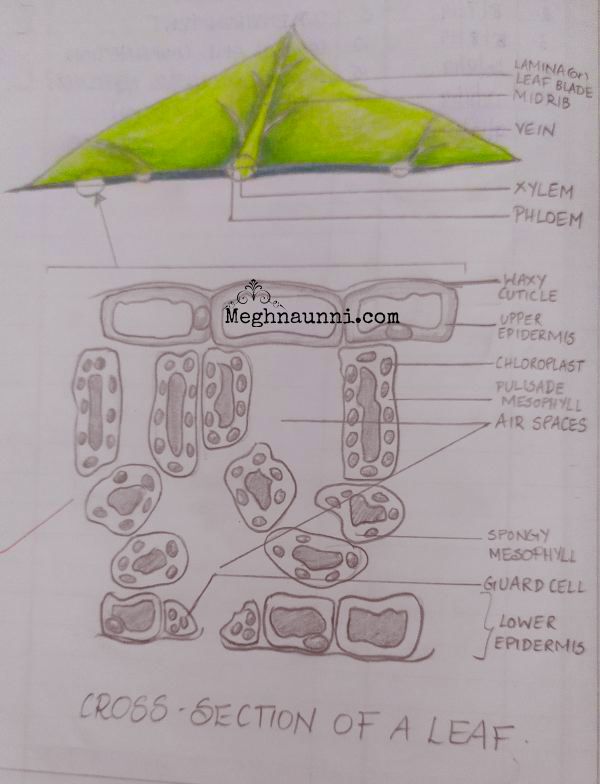
CBSE Class 10 SCIENCE: Biology – Life Processes Lesson Notes | Chapter 6 – Part 1
The 6th chapter in the NCERT Science Textbook, Life Processes is quite an interesting chapter, but very long. In short, it covers the functioning of the digestive system, the respiratory system, the circulatory system and the excretory system in both plants and humans. When I found this chapter long and vast, I decided to learn the entire chapter in the form of Q/As, which made it very easy for revision. So here are the Q/As I made, which covers almost the entire chapter.
LIFE PROCESSES: Q/As from start till Nutrition in Plants:
1.Why is there a controversy regarding the life of a virus?
Ans: Viruses are very small and do not show any molecular movement until they infect a living cell. This is the reason for the controversy whether a virus is living or non-living.
2. What are the criteria you consider to decide whether an organism is alive or not?
Ans: Movement, respiration, intake of food, response to stimuli, reproduction, growth, excretion etc.
3. What are Life Processes? Give 2 examples.
Ans: The processes which together perform the maintenance jobs in an organism are called life processes. Two examples are: nutrition and respiration.
4. Why are food sources carbon-based?
Ans: Life on earth itself depends on carbon-based molecules. Thus, food sources also depend upon them.
5. Why will diffusion not be sufficient for the different requirements of multicellular organisms?
Ans: In unicellular organisms, the cell is directly in contact with the environment, and thus, simple diffusion will meet the different needs of the organism. But, in a multicellular organism, there are different organs, and the body design is complex. The cells are not in direct contact with the environment. Thus, simple diffusion will not suffice for the everyday needs of the organism, such as oxygen.
6. What are outside raw materials used for by an organism?
Ans: Outside raw materials are used to enhance the body growth of an organism.
7. What processes would you consider essential for the survival of an organism?
Ans: Nutrition, respiration, reproduction, transportation, and excretion.
8. Even when we are not doing anything, why is it important to have energy?
Ans: When we do an activity, we use up energy. But, when we are not doing any activity, like when we’re sleeping, energy is still required to maintain a state of order in the body, because internal processes such as respiration, digestion and circulation are still going on.
9. How do autotrophs obtain their food?
Ans: Some organisms obtain simple food materials from inorganic substances/ sources in the form of of carbon dioxide and water. Such organisms are autotrophs such as green plants and some bacteria.
10. How do heterotrophs obtain their food?
Ans: Some organisms utilise complex substances which have to be broken down into simpler ones before they can be used by the body. For this, the organism makes use of bio-catalysts called enzymes. The heterotrophic survival depends directly or indirectly on autotrophs. Heterotrophs include animals and fungi.
11. What is photosynthesis?
Ans: It is the process by which autotrophs take in inorganic substances from outside and convert it into stored forms of energy, in the presence of an external energy source such as the Sun.
This material is taken in in the form of carbon dioxide and water, which in the presence of chlorophyll and sunlight is converted to carbohydrates (utilized for giving energy to the plant). The carbohydrates which are not immediately used are stored in the form of starch.
12. State the chemical equation for the photosynthesis process.

13. State the events that take place during photosynthesis.
Ans:
- Absorption of light energy by chlorophyll.
- Conversion of light energy into chemical energy.
- Splitting of water molecules into hydrogen and oxygen.
- Reduction of carbon dioxide into carbohydrates.
14. Give one example in which the events of photosynthesis do not take place one after the other immediately.
Ans: In desert plants, the carbon dioxide is absorbed during night and they prepare an intermediate which is acted upon by the energy absorbed by chlorophyll during day. Hence here, the events do not take place one after the other immediately.
15. How will you identify chlorophyll under the microscope after observing the cross-section of a leaf?
Ans: After observing the cross-section of a leaf under the microscope, it will show some cells containing green dots. These green dots are cell organelles called chloroplasts which contain chlorophyll.
16. Show the cross-section of a leaf diagrammatically.
Ans: 
17. How do plants obtain carbon dioxide?
Ans: Plants have stomatal pores on the leaf surface. These stomatal pores obtain carbon dioxide from the atmosphere.
18. How do stomata regulate its opening and closing?
Ans: During the times when the leaf/stomata is not absorbing CO2, the absorbed water may go out through the stomata. So, it closes the pore when not performing photosynthesis.
This is done with the help of guard cells, which swell up when there is enough water, causing it to open, and shrinks when dehydrated causing it to close.
19. What are the different nutrients required by plants?
Ans: Hydrogen, Nitrogen, Oxygen, Iron, Phosphorous, Calcium, Magnesium, Potassium.
20. What is nitrogen used for in plants?
Ans: Nitrogen is used as nitrites, nitrates (rhizobium), and for the protein synthesis as amino acids and other compounds.
Very useful